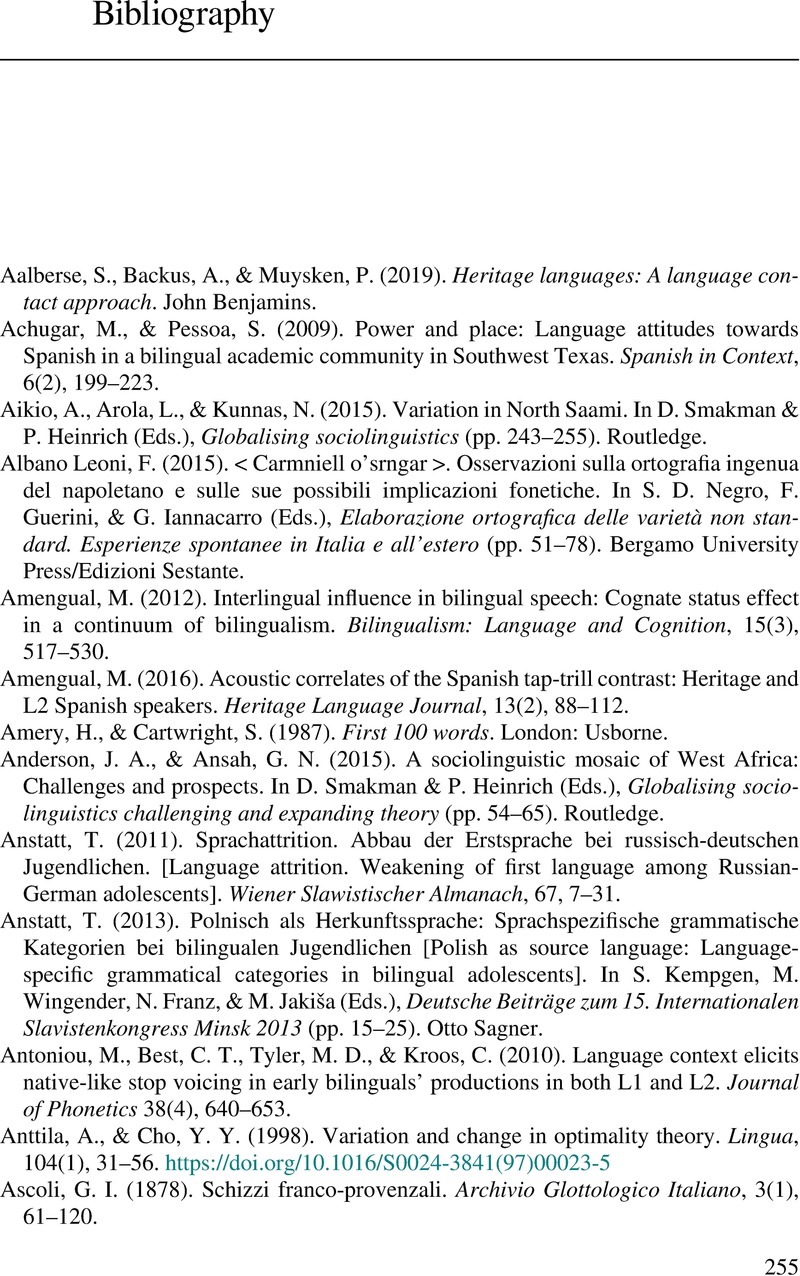Book contents
- Heritage Languages
- Heritage Languages
- Copyright page
- Epigraph
- Contents
- Figures
- Tables
- Acknowledgements
- Abbreviations
- 1 What Are Heritage Languages and Why Should We Study Them?
- 2 Experimental and Variationist Research on Heritage Languages
- 3 The Toronto Context
- 4 HLVC Methods and Tools
- 5 Cross-Variety Comparisons
- 6 Cross-Language Comparisons
- 7 Heritage Cantonese
- 8 Indexicality in Heritage Languages
- 9 Working with Heritage Languages in Linguistics Classes
- 10 What Heritage Language Speakers Tell Us about Language Variation and Change
- Bibliography
- Index
- References
Bibliography
Published online by Cambridge University Press: aN Invalid Date NaN
- Heritage Languages
- Heritage Languages
- Copyright page
- Epigraph
- Contents
- Figures
- Tables
- Acknowledgements
- Abbreviations
- 1 What Are Heritage Languages and Why Should We Study Them?
- 2 Experimental and Variationist Research on Heritage Languages
- 3 The Toronto Context
- 4 HLVC Methods and Tools
- 5 Cross-Variety Comparisons
- 6 Cross-Language Comparisons
- 7 Heritage Cantonese
- 8 Indexicality in Heritage Languages
- 9 Working with Heritage Languages in Linguistics Classes
- 10 What Heritage Language Speakers Tell Us about Language Variation and Change
- Bibliography
- Index
- References
Summary

- Type
- Chapter
- Information
- Heritage LanguagesExtending Variationist Approaches, pp. 255 - 282Publisher: Cambridge University PressPrint publication year: 2024



